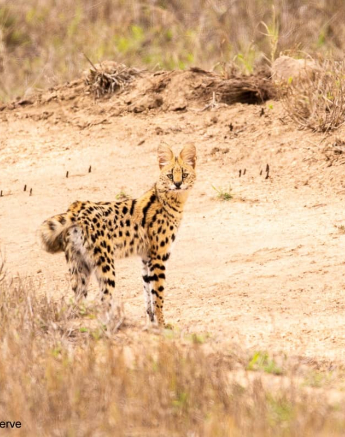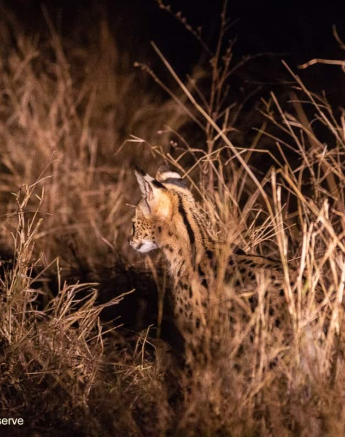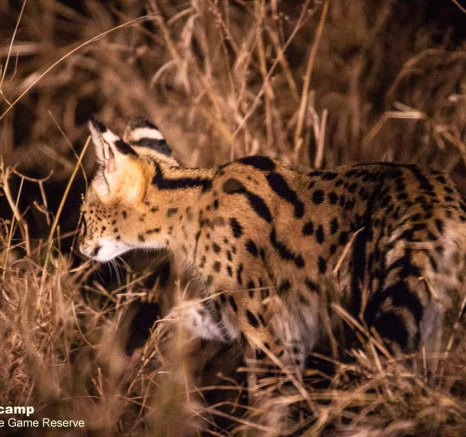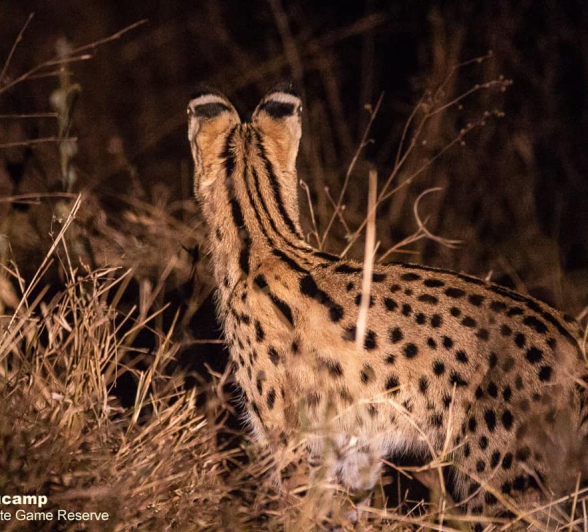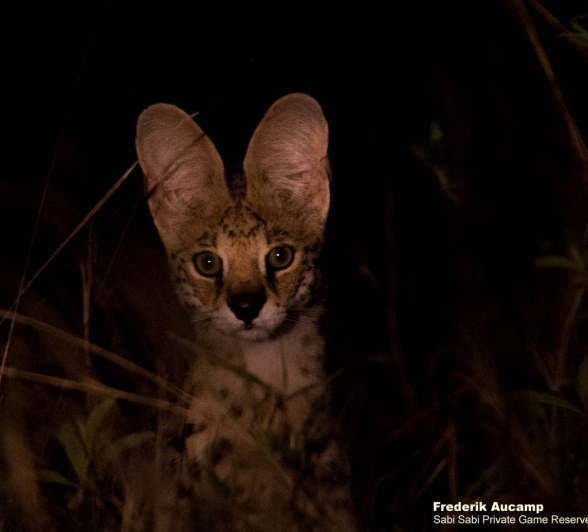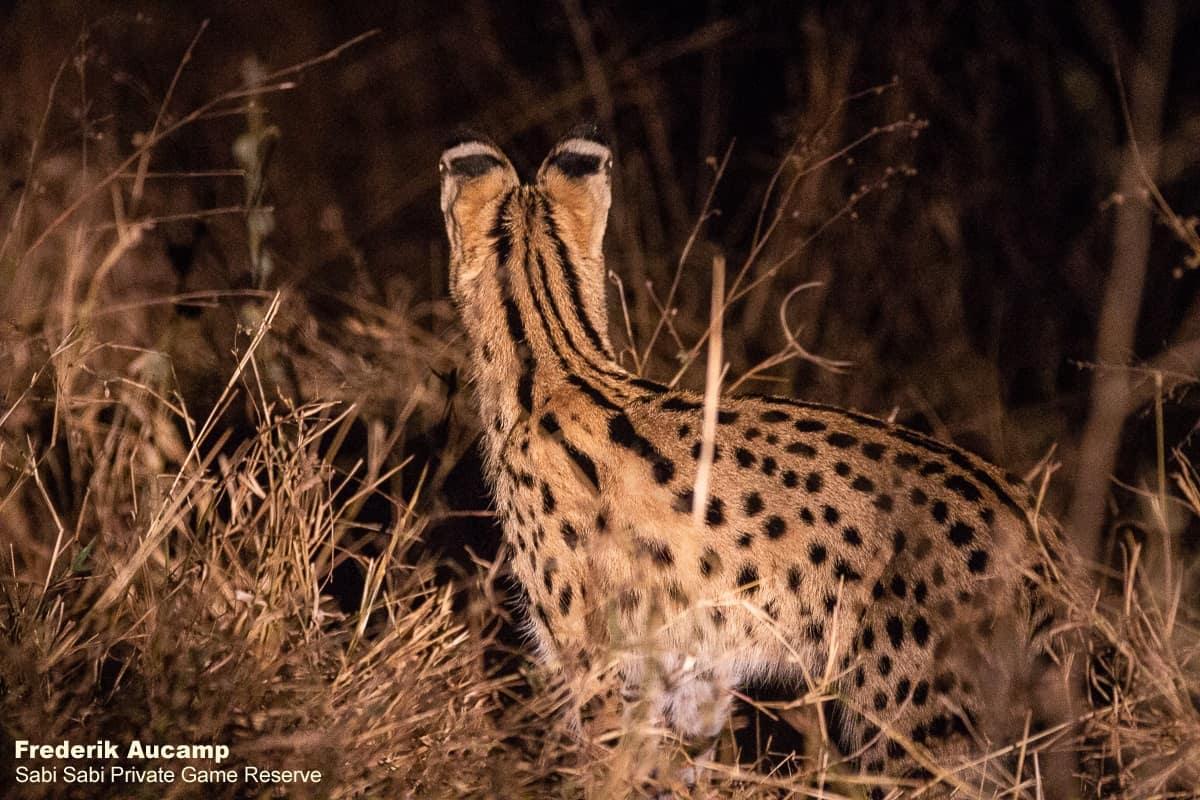Serval
on Nov 21, 2019Species name: Serval
Scientific name: Leptailurus serval
Weight: Male: 9 – 13kg Female: 8 – 12kg
Shoulder height: Male: 60cm Female: 60cm
General habitat: They prefer thick vegetation with tall grass and areas with sufficient shelter.
Diet: They will eat a variety of rodents and bird species, but will also feed on frogs, insects and fish. They will also go for bigger prey, like lambs of smaller antelope species.
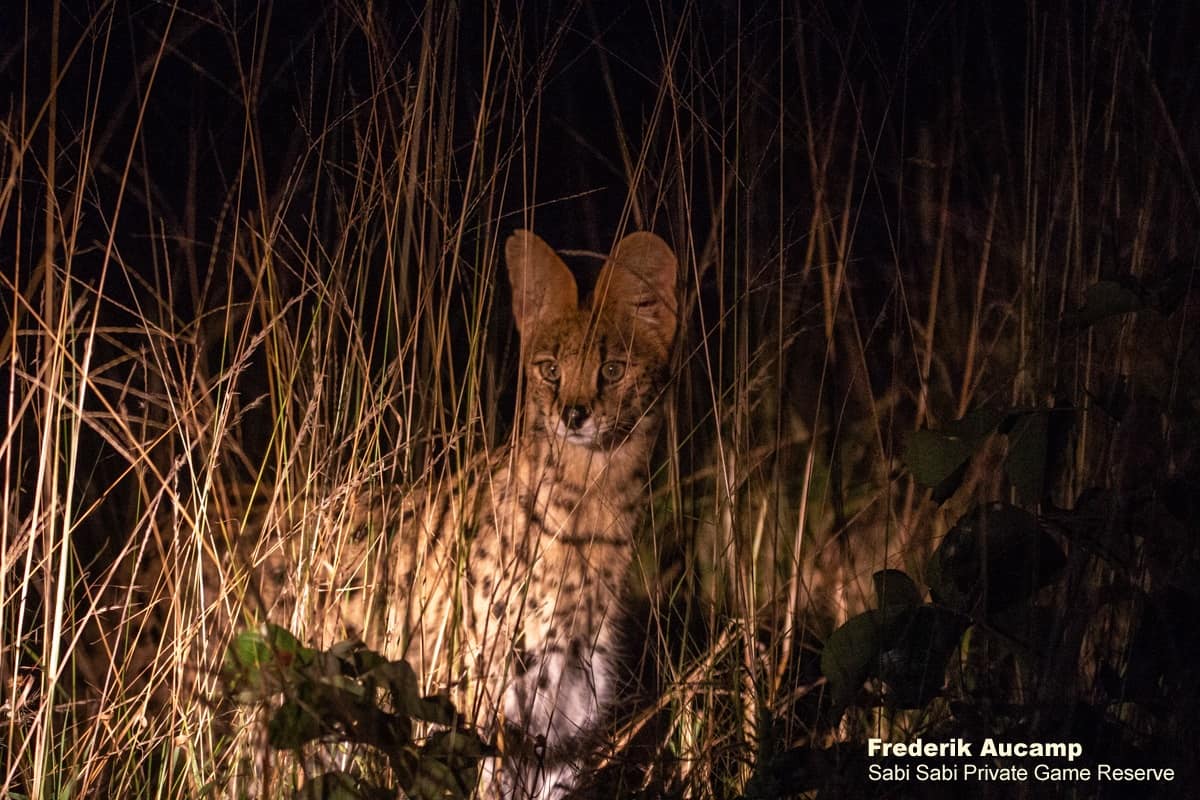
Servals are beautiful, elegant animals with a golden yellow coat, covered in black spots on their sides, black lines running down their back and black rings on their tail. Their spot pattern allows them to camouflage perfectly in the dense vegetation, enabling them to get close enough to their prey to make the kill.
Servals are mostly active at night and this is when most of the hunting will happen. When hunting, their long legs allow them to stand tall amongst the high grass, giving them a clear view of what might be lurking in the thick foliage. They also have massive ears that will detect any movement of prey, even underground prey. Normally when prey has been detected, the serval will leap up into the air and land on their prey. The impact when landing on their prey normally kills the prey. If the prey is not immediately killed, it will leap on it again until the prey is completely dead. They also love playing with their prey and will sometimes toss their prey around a couple of times before killing and eating it. Like leopards, servals will pluck feathers or fur from their prey when feeding.
Servals are rodent specialists and it forms a main part of their diet. They play an important role in the population control of rats and mice. It is believed that one individual serval can kill anything from three thousand to four thousand rodents in one year.
Even though these elegant creatures are successful hunters and do very well in their natural habitats, they still face some serious threats. They are pretty rare in most countries and their main threat is habitat loss. They are vitally important to our ecosystem and we are responsible to keep them in existence and to conserve them and their habitat.
Luckily Sabi Sabi is one of the few safe havens for these beautiful creatures, so come and visit us on a Sabi Sabi safari and you might be lucky enough to see this rare creature.
My Memorable Sighting
On one of our morning safaris, we decided to go to the southern part of our reserve. We were following fresh tracks of a female leopard for most of the morning, but we were unsuccessful in finding her. We decided to go and stop for a cup of tea or coffee under the shade of a big Marula tree. After our morning coffee stop, we continued our drive towards the Sabie River. On our way to the river we spotted something far away in the middle of the road. At first, I thought it might be a young leopard or cheetah, but when I looked through my binoculars, I could not believe my eyes, it was a serval. Not only is it rare to see a serval, but to see a serval in the daytime and in the open is extremely rare as they are mostly nocturnal. We drove closer and had a brief view of it just before it disappeared in the long grass. This was an incredible sighting and I will remember it as one the highlights of my career.
Photo Content
